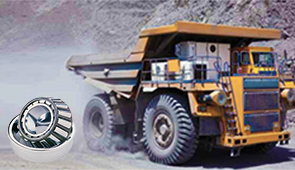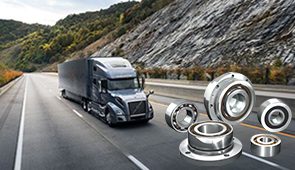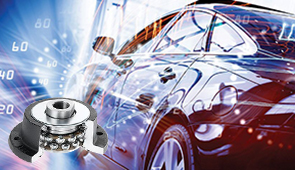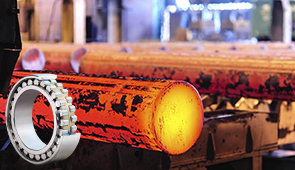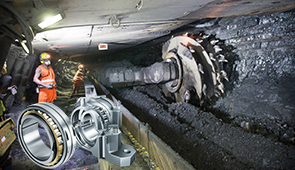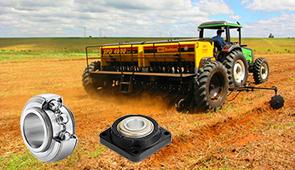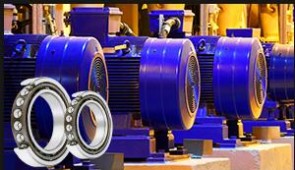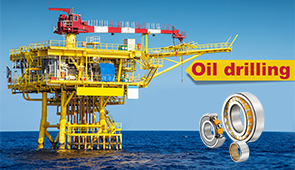Understanding Bearing Clearance: Essential Insights for Engine Builders
When it comes to building high-performance engines, precision is not just an advantage—it’s a necessity. One of the most critical yet often misunderstood aspects of engine assembly is bearing clearance. Incorrect bearing clearance can lead to severe consequences such as reduced engine lifespan, inefficient performance, or even catastrophic failure. This article dives deep into the fundamentals of bearing clearance, explaining what it is, why it matters, and how it directly impacts engine reliability and efficiency. Whether you’re an experienced engine builder or just beginning your technical journey, this guide will provide the detailed insights you need to make informed decisions and build engines with unmatched durability and performance.
What is Bearing Clearance?
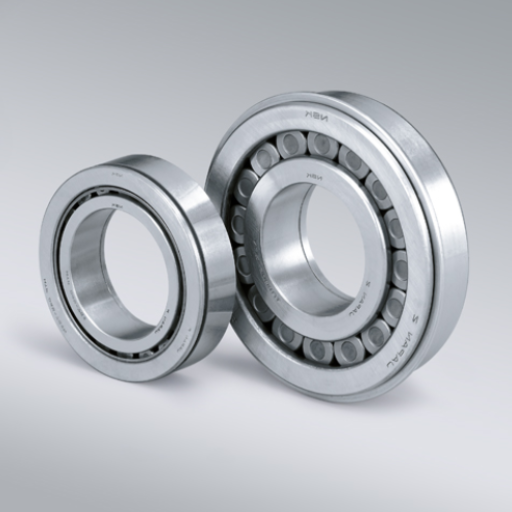
Defining Bearing Clearance
Bearing clearance refers to the gap existing between the bearing surface and the shaft or journal that it carries. Bearing clearance, more precisely, is the value of the gap of the bearing space that allows the formation and sustenance of an oil film. The oil film is important in friction minimization and avoidance of metal-to-metal contact during the operation of the system. In any engine, bearing and shaft are aligned in such a way that ensures relative rotation about the axis and causes efficient heat transfer, as well as allowing for thermal expansion, as well as minor misalignment of engine components.
A mechanical system systematically depends upon balance. The oil clearance is required to strike a balance between oil lubrication and factors that lead to loss of structural integrity. If clamp oil clearance is made with minimal value, a flood of oil reaches the bearing parts, leading to friction, expansion, and of the order of hundreds of degrees in excess thermal energy. On the other hand, giving too much oil clearance would result in having a negative impact and collapsing local oil pressure.
The optimal value bearing clearance depends on type and condition centrifugal engine, environmental conditions and material properties of supporting and bearing components. This optimal bearing clearance can easily be ensured by measuring with measuring instruments to the level of micrometers and other precision measuring devices which leads to formation of optimum efficiency, directed minimum abrasion and achieving dependent conditions.
Types of Bearing Clearances: Radial vs. Axial
Radial clearance describes the gap that exists between the rolling elements of a bearing, such as balls and rollers, and its raceways in a direction perpendicular to the axis of rotation of the bearing. This type of clearance mainly influences how well the bearing manages misalignments or dynamic loading during operation. Adequate radial clearance is important in minimizing internal friction because of low vibration and even load distribution over rolling elements to delay the onset of wear or failure.
In contrast, axial clearance concerns the space within which the rolling elements of a bearing may be displaced along the axis of rotation. Proper clearance in the axial direction is vital for accommodating expansion in the bearing owing to rise in temperature, managing axial loads, and linear displacement due to alternating operational pressures. The absence of proper clearance will result in strain along the axial direction which becomes excessive leading to mechanical deformation or loss of operational effectiveness.
Both radial and axial clearances depend on each other, and both should be tailored to discrete use cases. With the right fixation as per the manufacturer’s recommendations, and the tolerances of materials, the radial and axial adjustments of clearances greatly improve bearing systems.
Why Bearing Clearance Matters in Engine Building
Bearing clearance is an important consideration when building engines as it affects the operational efficiency, reliability, life span, and overall performance of the equipment. If bearing clearances are set incorrectly, whether too tight or too loose, a serious mechanical breakdown is bound to occur. In case of tight bearings, the film of lubricant may be thinner than required, leading to high friction, too much heat, and bearing locks. In case of excessive looseness, clearance no longer aids in support but becomes a source of unwanted movement, which leads to incorrect distribution of load, tending to vibrations and increased wear and tear of parts.
Temperature limits for operational bearings in conjunction with material factors such as expansion coefficients, load, and rotational velocity determine optimal bearing clearance. Modern engine designs employ precision engineering and sophisticated materials to ensure that these clearances are maintained within micro-measured ranges. For example, tighter tolerances are required by high-speed turbocharged engines to maintain stability at high temperatures and pressures, while heavy-duty diesel engines can afford slightly looser clearances due to thermal expansion from increased workload sustained for long hours.
Following specified standards, implementing tools like measurement and other advanced diagnostics, guarantee precision in achieving the desired clearance. Improvement of bearing clearance will enhance lifespan not only of individual parts but also of the entire engine and its efficiency and reliability.
How to Check Bearing Clearance?
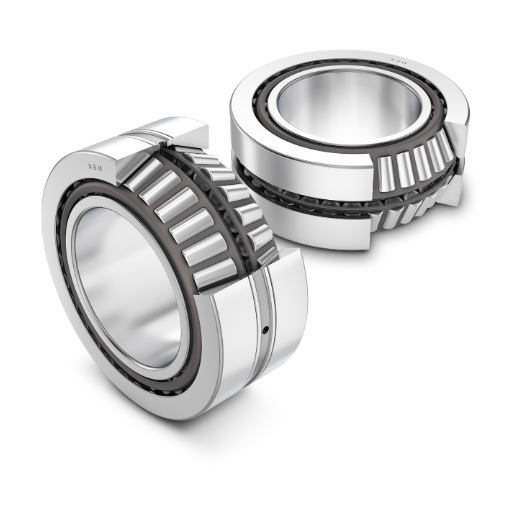
Tools for Measuring Bearing Clearance
As with any highly accurate measurement regarding engineering, bearing clearance measuring requires specialized equipment to ensure accuracy and precise results. The most common tools include:
- Plastigage: this measuring tool is very popular. It consists of calibrated strip that is flexible in nature and squeezes when positioned between the bearing and journal. By measuring the width of the flattened material against the scale provided, accurate clearance measurements can indeed be established.
- Dial Bore Gauge: This is an important bearing gauge that is used to accurately measure the bearing’s inside diameter. It uses the bearing’s internal diameter and the shaft or journal’s external diameter with the gauge to measure any differences that may be present, thus taking care of the required clearance.
- Micrometer: These devices are used to measure the diameter of the journal and are very precise. They are always used together with dial bore gauges. They are very helpful in verifying the dimensions to ascertain that the bearing clearance is indeed to the company’s standards.
- Feeler Gauge: Unlike the other devices, feeler gauges are not as commonly used for bearing clearance but can still be very useful, especially in gap measurement during large gap applications.
- Measuring Systems Using Lasers Technology: Technology now allows for the use of lasers to measure with extreme precision, even when analyzing the clearance of bearings. These systems are capable of measuring inaccuracies through laser reflection and computer software, then preparing elaborate reports.
Combining the right tools with proper measurement techniques, such as temperature compensation and material properties, results in the best operation and lifespan of engine components. The tools also have to be consistently calibrated and maintained over time to ensure precision.
Steps to Check a Bearing in an Engine Block
- Examine the Bearing Housing: Start with the bearing housing and look for any signs of wear, corrosion, or damage. Remove any debris or contaminants from the housing in order to facilitate proper evaluation. The assessment helps in ascertaining if the bearing housing is fit for bearing installation or replacement.
- Estimate the Bearing Clearance: Measure the bearing housing’s internal diameter using a micrometer or dial bore gauge and compare it against the engine manufacturer’s specifications. As with other measurements, remember that thermal expansion or contraction of the material may require temperature compensation techniques.
- Check Bearing for Signs of Wear or Damage: Taking out the bearings does necessitate some level of care because, upon inspection, they should not show any signs of pitting, scoring, or discoloration that result from excessive heat or improper lubrication. Overheating most times results in overlooked signs; these bearings need to be replaced immediately to avoid dire consequences for the engine.
- Check Alignment and Roundness: Together with a bore gauge or a laser alignment tool, check the roundness and alignment of the bearing bore. Improper alignment does lead to uneven load distribution and early bearing failure. All record any changes that go beyond the manufacturer’s tolerances and decide if machining or further corrections are what you need.
- Examine Bearing Lubrication System: Check that the lubrication channels into the bearings are clear and clean. Lubrication is essential in mitigating friction and temperature during operations. Look for any obstructions that may be regarded as sludge, which may block oil circulation and damage the bearing.
- Reinstall Bearings with given Torque Settings: After all the inspections and maintenance are done, reinstall new or old bearings as per the given torque settings in the engine’s service manual. Unequal tightening can lead to imbalanced pressure distribution which will cause operational issues.
- Engine Test Run: After installing the bearings and assembling the engine, conduct a test run checking for abnormal bearing vibrations, and noises alongside temperature changes.
Advanced engine components require sophisticated and meticulous processes intertwined with timely information and the best modern inspection equipment.
Common Mistakes When Measuring Bearing Clearance
- Applying Substandard Tools or Equipment: Using improper tools is often the most common mistake committed when measuring bearing clearance. A measuring bearing requires quality equipment like micrometers, telescoping gauges, or even digital calipers. Furthermore, using outdated tools that are not properly calibrated also increases the chances of making inaccurate measurements which can worsen the condition of the engine or other machinery.
- Ignoring Influence of Temperature: Measuring clearance while ignoring or neglecting expansion because of heat is another critical blunder. Bearings and their counterpart components expand or contract when the temperature increases or decreases which directly impacts the clearance.
- Not Using Correct Preload: Not enforcing the right torque or putting conditions before assembly also impacts measuring bearing clearance. In measuring bearing clearance, improper preload settings or misalignment can skew the results. There are also cases where bolts are not evenly tightened and the end results are grotesque measurements. Before any measurements can be ensured, all parts must be seated and aligned properly first.
- Failing To Clean Bearing Surfaces: Any particles, dirt, or outside gunk also affect clean measurements. Always ensure thorough cleaning of both bearing and measuring tools to prevent wrong readings courtesy foreign matter. Even the tiniest of particles can disrupt the clearance values that are computed by precision machinery.
- Disregard Bearing and Machinery Documents: Each bearing and piece of equipment has its particular clearance limits as defined by the manufacturer. Using one-size-fits-all clearance standards without checking particular clearances on the technical documents may result in a mismatch or unproductive work. Reference as quote “document” aka technical manual for specific details to prevent losing machines due to breakdowns because of precision failure.
- Procedural Errors: Inability to note details like mixing up wedge gaps with radial gaps or wedge gaps with wedge clamp gaps becomes a deviation that alters the machine preset adjustments. Further failing to note results in not being presented with other relevant comparisons expected, but the result hampers the ease of the machine comes to the end of its life cycle limited maintenance options.
Bearing adjustment precision is set, then combines tailoring cleared gaps with fitting standards and rules then dominated by measuring, aiming to eliminate any above, and ensuring the need to eliminate where shortcomings lie, thanks to the avoidance of gaps with bearing clearance standards.
The Impact of Oil Viscosity on Bearing Clearance
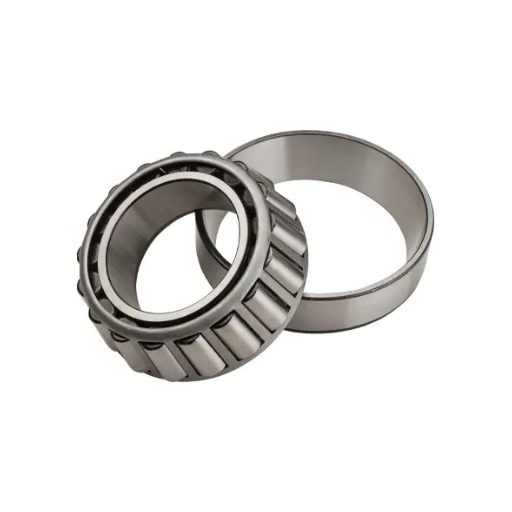
Choosing the Right Oil Viscosity for Your Engine
Achieving ideal bearing function and maximum engine life requires the selection of the correct viscosity grade of oil. Oil viscosity has an impact on the lubrication film thickness, which is the oil layer separating the bearing surface from the moving parts. The oil’s higher viscosity exerts better lubrication and would be advantageous in high-load or high-temperature conditions, but in lower temperatures, the friction and inefficiency may be adversely affected. In comparison, lower viscosity oils lubricate better during cold starts and decrease internal drag, but may not offer adequate protection in heavy loads or long durations at high temperatures.
Today’s automobiles, as well as industrial engines, are equipped with precisely designed lubricants of specific viscosity grades that meet international standards. Engineers, while selecting the suitable viscosity grade for a lubricant for an engine, need to take into account the operational environment, temperature limits, loads, speed, etc. Take, for instance, multi-grade oils that are 5W-30, these are often preferred because they are known to keep performance constant across different temperature limits. The assessment of chosen lubricants for particular operating conditions is supported by oil analysis programs with laboratory-tested viscosity indices.
Not selecting the right viscosity can have dire consequences like oil starvation, overheating, and excessive wearing out of the material. Many sectors are increasingly using synthetic oils with nano-additive blends since they allow for better control over viscosity and enhanced thermal stability.
How Oil Viscosity Affects Oil Pressure and Clearance
Viscosity, which describes the resistance of a fluid to flowing, defines the capability of an oil film to sustain load, reduce friction, and prevent metal-to-metal contact. Thicker oils will enhance load-bearing capacity by providing thicker lubrication layers, but this may lead to higher internal resistance, increased oil pressure, and reduced flow rates at lower temperatures. Lower viscosity oils consume less energy and therefore provide faster lubrication during cold starting conditions, but may weaken the oil film at high load or temperature conditions.
An increase in pressure will require thinning of the oil viscosity, and therefore, for an engine to function properly, the balance between pressure and oil viscosity has to be attained. Oil viscosity is the measure of lubricating oil’s mechanical properties that need to be worked upon at a given temperature. Clearance, which is the distance or gap between two components that are intended to move, is defined as the distance that is the difference between the radius of a crankshaft journal and its bearing. A well-defined viscosity will be able to maintain the hydrodynamic lubrication regime instead of being disrupted by thick oil, which will overheat and starve the oil.
Complex viscosity modifiers and multi-grade oils address these problems by providing better oil flow at different temperatures. While selecting an oil viscosity, engineers need to think of the engine design specifications and operating conditions, including the outside air temperature, as these characteristics affect lubrication, system life, and energy consumption. Research and practical experience show that there is a constant need to fine-tune the management of oil viscosity to specific operational conditions to reduce wear and improve the performance of machines.
Thicker vs. Thinner Oils: What’s Best for Bearing Clearance?
Making a selection between thinner or thicker oils for bearing clearance is dependent on several operational factors such as: load conditions, speed, operating temperature, and specific design tolerances of the bearing system. The slower the mechanical system operates, or the higher the load placed on it, the higher the viscosity of oil that can and should be applied. This is because under these conditions, adequate oil film maintenance is critical to avoid metal-to-metal contact. While thicker oils may result in reduced energy efficiency due to their higher inertia within high-speed systems, their greater fluid friction and difficulty with internal heat removal are also issues. That said, these oils do have better performance in demanding applications.
Conversely, thinner oils, or lower viscosity fluids, need to be applied in systems that operate at greater speeds. These oils aid in enhanced system efficiency due to their lower fluid drag and ability to maintain swift flows. Their ability to enter and shed lubricating film across tight clearances and mitigate heat generation is also a large plus. The caveat to these oils lies in their reliance on optimal clearances or middle pressure conditions where less of a backup pressure exists. This could give rise to greater chances of deterioration in systems due to a lack of sufficient load-bearing capacity.
To guarantee proper bearing functioning, oil viscosity should be balanced appropriately based on the operating conditions. Studies show that a bearing’s clearance is not the only factor that needs to be considered; the bearing’s Reynolds and Sommerfeld numbers also play major roles as they define the ratio of viscosity to angular speed and load.
Understanding the Rule of Thumb for Oil Clearance
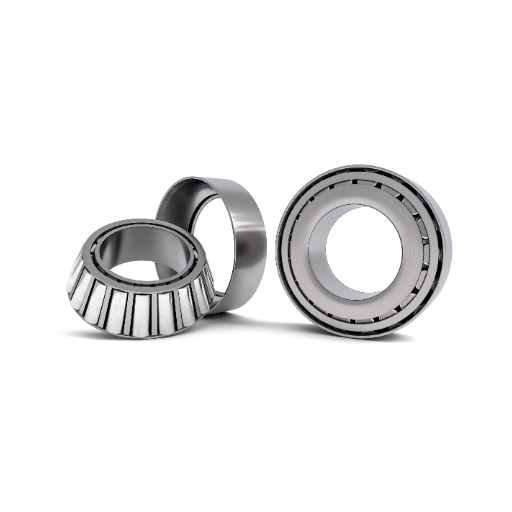
Explaining the Rule of Thumb in Engine Building
In this particular instance, the adage of oil clearance relative to and while building an engine is practical in estimating the gap that is supposed to exist between the bearing face and the crankshaft journal. It is common practice to suggest an oil clearance of 0.001 inch for every inch of the journal diameter. Thus, for a crankshaft having a journal diameter of 2.5 inches, an oil clearance of 0.0025 inch would normally be accepted. This guideline helps to enable proper lubricating action while minimizing any possibility of undue wear or reduction in oil pressure.
However, maintaining exact oil clearance is critical in achieving hydrodynamic lubrication; a situation in which the oil film carrying the load entirely prevents contact between the surfaces, mechanically. Too tight or loose clearances will result in bearing failure, overheating, inadequate oil circulation, low load capacity, among other problems.
Factors like thermal expansion, component wear, and the exact mixture of synthetic or conventional oils used need to be considered when following the oil clearance rule of thumb. This combination of methods gives the best assurance alongside reliability and peak engine efficiency.
Applying the Rule of Thumb to Different Bearing Types
Plain bearings depend greatly on hydrodynamic lubrication, where more often than not, “one-thousandth of an inch per inch of diameter” is usually a good starting point. On the other hand, factors such as oil viscosity, operating temperature, and dynamic loads require bespoke solutions to maximize film thickness and reduce damage for high-speed plain bearings.
In the case of rolling element bearings like ball or roller bearings, the clearances are more geometric while specifying the internal cavity and wraps due to the point or line contact instead of full contact used by these bearings. Relatively large clearances can result in additional vibration and misalignment, whilst small clearances can lead to rolling element and raceway binding due to thermal expansion in high-speed operations.
Moreover, bearings that manage thrust axial loads require consideration of the rule to be applied in more detail. Contact stress which is too high may, due to insufficient clearance, generate an intolerable amount of heat, while too great a clearance may result in instability of load distribution and stability.
How Crankshaft and Connecting Rod Affect Bearing Clearance
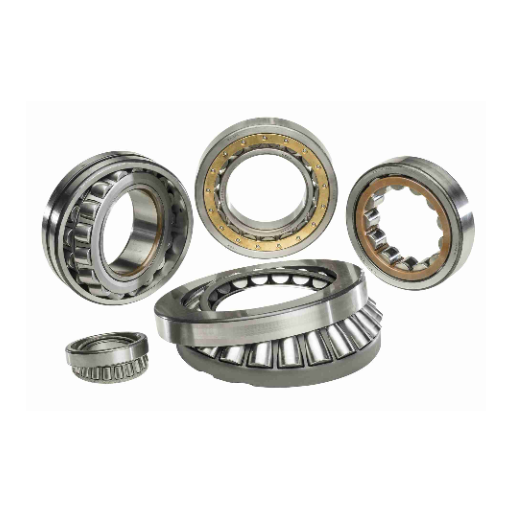
The Role of Crankshaft Journal in Bearing Clearance
The role of a crankshaft journal in maintaining bearing clearance is particularly important for the determination of lubrication film thickness as well as engine life. Each journal’s roundness, diameter, and surface finish contributes to bearing clearance control. Degradation of oil film geometry can cause undue localized heating which may accelerate bearing material wear and tear.
For optimally precise cloth clearance conditions to be achieved, crankshaft journals have to be machined within very stringent tolerance levels. Minor imperfections may have a detrimental effect on free space stability. Surfaces of derived journal parts are quoted by the industry as having an expected roughness configuration (Ra) of 0.1 to 0.3 μm, enabling oil to pass unhindered whilst avoiding marking and damage. Additionally, for journals to remain operationally cylindrical, they must not deflect excessively, as 2800 rotational meters per second serve to unbalance clearance along multiple bearing positions, inviting geometrical changes to cylindrical symmetrical volume void displacement.
Stronger crankshaft alloys are used in conjunction with newer materials technology and are subjected to a surface nitriding process, which improves fatigue strength but maintains journal surfaces. Bearing clearance regulation is rendered precise constructive fit with current engineering innovations, allowing for tighter tolerances to be relied upon. Tighter bearing clearance tolerance controls result in improved relaxation overflow structure, es yielding higher engine life whilst sustaining lower performance intervals.
Impact of Connecting Rod on Oil Wedge and Lubrication
Great attention must be given to the construction and movement of a connecting rod as it dampens and facilitates the formation and retention of an oil wedge in a bearing system. The weight, height, and rigidity of the connecting rod alter the reciprocating motion as well as the load distribution, which occurs during the engine operation and, in turn, defines the cycles of hydrodynamic lubrication at the interface of the crankshaft journal and bearing shell.
For the entirety of the operation cycle, the connecting rod reciprocates the combustion forces from the crankshaft and induces the generation of stress patterns. This repetitive loading becomes very important in the construction of oil wedging, which must be carefully executed as oil squeeze films are simply pressurized liquids, so wedging doesn’t result in actual contact of metals as opposed to oil being present. Differences in material make and shape of the rod result in changes in the lubrication film and equilibrium pressure distribution. For instance, fragile rods greatly reduce block inertia g force, allowing the fragility of the oil film to remain intact under high-speed conditions.
The use of forged alloys and high composite strength marks introduced for the rest of the rods parallel the demands of geostationary oil hydrogen storage in that rods are made tougher and tougher as the exogenous forces need to be consistently applied, so exceeding resistance manifests the delicate balancing act, anchoring an oil wedge preserves. Studies and modeling done in computational fluid dynamics reveal that from connecting rod composition, looser weight tolerances equal non-uniform lubrication per volume, robbing the structure.
In the end, knowing how each detail of the connecting rod is related to the lubricating system’s functions helps engineers improve the mechanical efficiency and increase the working hours of internal combustion engines.
Adjusting Bearing Clearance for Optimal Oil Flow
Lack of clearance may lead to insufficient oil flowing which increases friction and overheating. Furthermore, it can cause potential damage to components because of metal-to-metal interaction. On the other extreme, excessive clearance may lead to instability of oil film formation, diminished hydrodynamic support, and enhanced oil leakage which decreases lubrication efficiency.
Bearings may be optimized due to recent progress made in tribology and fluid dynamics modeling. That steamers achieve better results whilst operating with an optimal clearance range, which is in microns for precision tasks. This is known to enhance a stable hydrodynamic oil film, which, as a bonus, protects bearing surfaces from overheating or contact with surfaces and expels heat while in use. Lubricants in oils whose flow rate changes due to clearance variation are supremely sensitive to changes within the boundary of viscosity and consideration of pressure variation. This information may be provided when customizing clearances concerning factors such as engine temperature, speed, and load changes.
Modern analytical models, when aligned with bearing clearance tolerances, enable manufacturers to balance oil flow, resulting in improved efficiency, decreased wear, and increased lifespan of vital engine parts.
Frequently Asked Questions (FAQ)
Q: What is bearing clearance, and why is it important for engine builders?
A: Bearing clearance is the gap between the bearing surface and the shaft it supports. It is crucial for engine builders as it affects the lubrication, heat dissipation, and overall engine performance. Proper bearing clearance ensures that the engine operates efficiently without excessive wear.
Q: How is the main bearing clearance measured?
A: Main bearing clearance is typically measured using precise tools such as micrometers and plastigauge. It is the difference between the diameter of the main bearing journal and the bearing itself, often specified in thousandths of an inch, such as 0.001-inch or 0.0005-inch of clearance for every inch of journal diameter.
Q: What are the effects of tighter clearances in a performance engine?
A: Tighter clearances in a performance engine can lead to improved oil control and increased engine efficiency. However, they may also result in higher operating temperatures and require more frequent maintenance. Careful consideration of the spec and operating conditions is necessary to avoid potential damage.
Q: How do loose bearing clearances affect engine performance?
A: Looser bearing clearances can improve oil flow and reduce the risk of bearing seizure, especially in high-load conditions. However, they may also lead to reduced engine efficiency and increased oil consumption. Balancing looser bearing clearances with the engine’s specific requirements is key.
Q: What is the difference between radial internal clearance and axial internal clearance?
A: Radial internal clearance refers to the amount of clearance in the direction perpendicular to the bearing journal, while axial internal clearance pertains to the clearance along the axis of the bearing. Both are important for ensuring proper alignment and function of the bearing within the engine.
Q: How does a stock engine differ from a performance engine in terms of bearing clearances to use?
A: A stock engine typically uses standard bearing clearances that prioritize longevity and reliability. In contrast, a performance engine may require tighter or looser clearances depending on the desired engine performance, such as improved power output or higher RPM capabilities.
Q: Why is it important to match the oil pump with the bearing clearances in an engine?
A: Matching the oil pump with the bearing clearances ensures that the motor oil is delivered efficiently to all engine components. Proper oil flow is essential for reducing friction, preventing overheating, and maintaining optimal engine performance.
Q: How do clearance classes affect the choice of rod bearings in a small-block engine?
A: Clearance classes define the permissible range of clearances for rod bearings. In a small-block engine, choosing the correct clearance class ensures that the rod journals and bearings work together efficiently, providing the necessary support and reducing the risk of engine failure.
UCTH213-40J-300 with Setscrew(inch)
CNSORDERNO: Normal-duty(2)
TOGN: UCTH213-40J-300
SDI: B-R1/8
SD: 2 1/2
UCTH212-39J-300 with Setscrew(inch)
CNSORDERNO: Normal-duty(2)
TOGN: UCTH212-39J-300
SDI: B-R1/8
SD: 2 7/16
UCTH212-38J-300 with Setscrew(inch)
CNSORDERNO: Normal-duty(2)
TOGN: UCTH212-38J-300
SDI: B-R1/8
SD: 2 3/8
UCTH212-36J-300 with Setscrew(inch)
CNSORDERNO: Normal-duty(2)
TOGN: UCTH212-36J-300
SDI: B-R1/8
SD: 2 1/4
UCTH211-35J-300 with Setscrew(inch)
CNSORDERNO: Normal-duty(2)
TOGN: UCTH211-35J-300
SDI: B-R1/8
SD: 2 3/16
UCTH211-34J-300 with Setscrew(inch)
CNSORDERNO: Normal-duty(2)
TOGN: UCTH211-34J-300
SDI: B-R1/8
SD: 2 1/8









